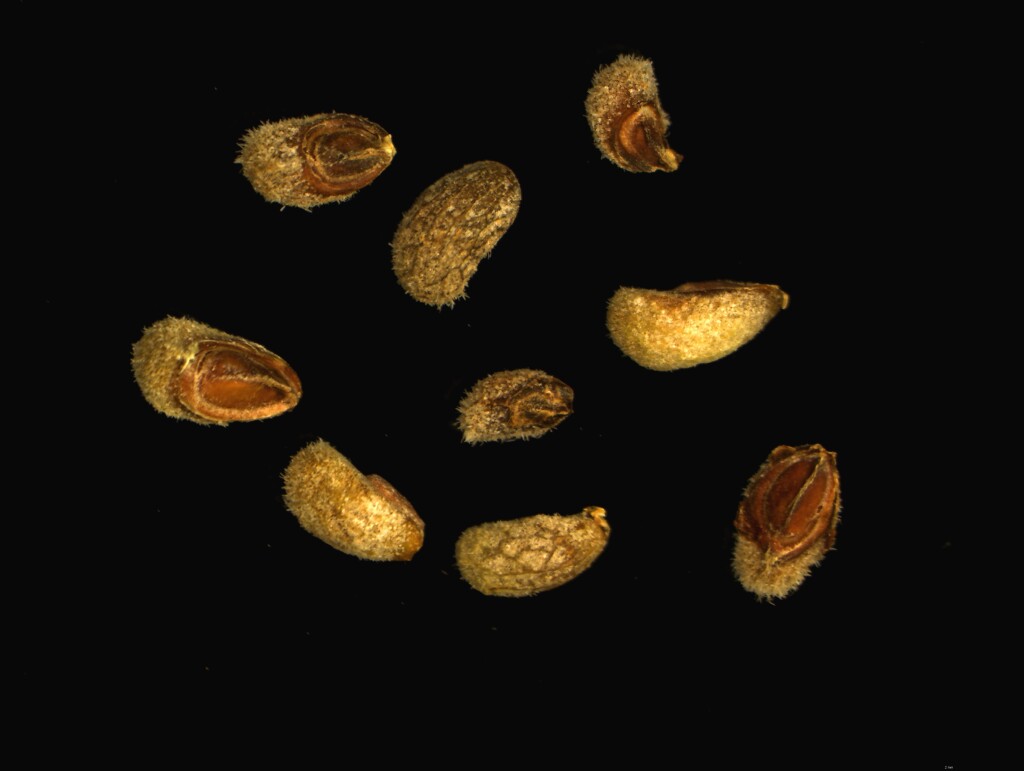Teucrium racemosum
R.Br. Grey GermanderPerennial herb 15–40 cm high, root-suckering and often forming stands to several metres across; branchlets white or greyish with dense simple retrorse hairs, becoming glabrous on angles. Leaves narrowly ovate, 1–2(–5) cm long, 2–6 mm wide, simple, sparsely to moderately pubescent above, densely white-pubescent below, apex sub-acute, margin entire or distantly lobed, usually unevenly recurved and/or undulate; sessile or subsessile. Flowers solitary (rarely 3) in distal leaf-axils; pedicel 5–18 mm long, often horizontal with distal end and flower erect. Calyx (2–)3–6 mm long, densely grey-pubescent with antrorse hairs, tube c. half as long as or equal to lobes; corolla white, tube slightly shorter than calyx, mid-lobe (2–)5–9 mm long, pubescent externally; stamens c. (1–)8–13 mm long. Mericarps 2–3 mm long. Flowers Sep.–Jun.
LoM, MuM, Wim, VVP, VRiv, MSB, RobP, MuF, GipP, OtP, Gold, CVU, GGr, DunT, NIS, EGL. Grows in sandy to clayey soils, often on floodplains or dry lake beds, chiefly in the north-west of the State, but with surprisingly disjunct occurrences in areas between Bacchus Marsh, Werribee and Melbourne.
The species is gynodioecious (Walsh & O'Brien 2013). Plants with small flowers and reduced stamens (indicated by bracketed values in description above) are male-sterile. Such plants were described as T. racemosum var. polymorphum Tovey & P.Morris.
Conn, B.J. (1999). Lamiaceae. In: Walsh, N.G.; Entwisle, T.J., Flora of Victoria Vol. 4, Cornaceae to Asteraceae, pp. 418–459. Inkata Press, Melbourne.
 Spinning
SpinningWalsh, N.G.; O'Brien, E. (2013). Gynodioecy in Teucrium racemosum (Lamiaceae). Muelleria 31: 77–80.



